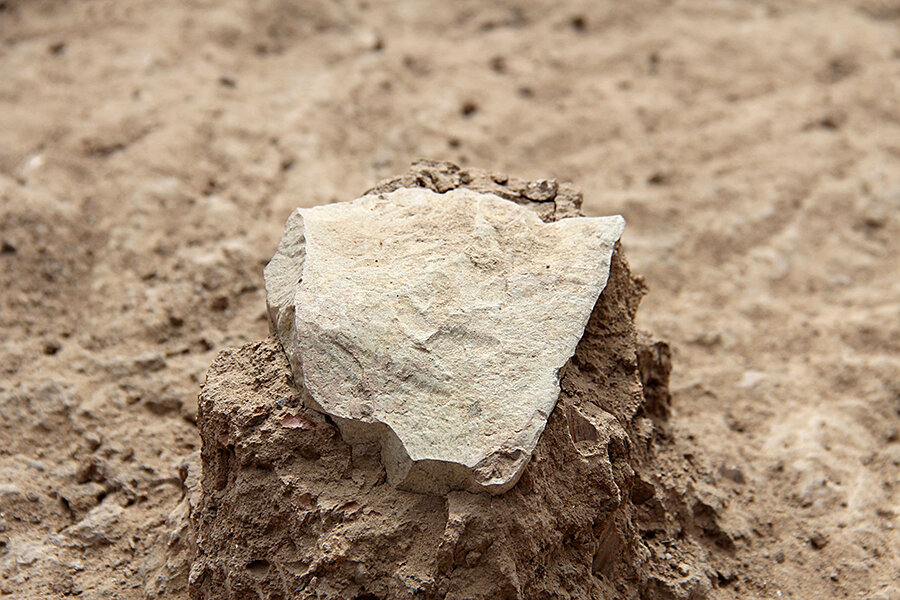Stone tools found in Kenya pre-date humans by half-a-million years
Loading...
| New York
By taking a wrong turn in a dry riverbed in Kenya, scientists discovered a trove of stone tools far older than any ever found before. Nobody knows who made them – or why.
At 3.3 million years old, they push back the record of stone tools by about 700,000 years. More significantly, they are half-a-million years older than any known trace of our own branch of the evolutionary tree.
Scientists have long thought that sharp-edged stone tools were made only by members of our branch, whose members are designated "Homo," like our own species, Homo sapiens. That idea has been questioned, and the new finding is a big boost to the argument that tool-making may have begun with smaller-brained forerunners instead.
The discovery was reported by Sonia Harmand and Jason Lewis of Stony Brook University in New York and co-authors in a paper released Wednesday by the journal Nature. The find drew rave reviews from experts unconnected to the work.
"It really absolutely moves the beginnings of human technology back into a much more distant past, and a much different kind of ancestor than we've been thinking of," said anthropology professor Alison Brooks of George Washington University, who has examined some of the tools.
The authors have "opened a new window onto the human past, illuminating the work of the first tool-makers and raising as many questions as they have answered," said Eric Delson of Lehman College in New York.
And Frank Brown of the University of Utah, an expert in determining the age of fossils who has known about the discovery for a couple years and visited the site, said he is "still kind of staggered by it."
The Nature paper describes 149 stones and stone flakes found west of Lake Turkana in a remote area of northern Kenya. Most objects are "cores," which are stones that have been struck to break off sharp-edged flakes. Other stones appear to have been used as hammers or anvils.
Africa is where our own species first appeared, and it has long been a hotbed for finding fossils of our forerunners. The Kenyan site was discovered one day in July 2011, when Harmand, Lewis and a crew set out to survey one area and by accident ended up in another one. There were gullies and hillsides that seemed promising, so they looked around, Lewis recalled in a telephone interview.
Just before tea time, a team member spotted a stone tool on the ground. More quickly appeared. Excavations followed.
As stone tools go, the artifacts are remarkably big. On average, the cores stretch about 6 inches long and wide and weigh nearly 7 pounds, for example, while the flakes are up to 8 inches long.
Compared to the next-oldest-known tool artifacts, "these things are enormous," which adds to the mystery of what they were used for, said David Braun, a tool expert at George Washington.
Generally, ancient human relatives are thought to have used stone tools for hammering, such as for cracking nuts, and for their sharp edges, useful for butchering and skinning animal carcasses as well as cutting up tough plant material.
Experts said they were stumped about the purpose of the Kenyan tools. Harmand said she thinks the overall purpose was to make sharp-edged flakes for cutting, but exactly how they were used is not known. Researchers are examining them with a microscope to look for clues.
Then there's the question of who made them. "The jury is out on that," Lewis said.
One candidate would be some Homo species not yet known to science, he said. Other possibilities come from outside the Homo branch, such as Australopithecus afarensis, best known for the skeleton nicknamed Lucy. Still another candidate is a creature called Kenyanthropus platyops, known from remains found not far from the site of the stone tools.
Nick Toth, who co-directs the nonprofit Stone Age Institute in Bloomington, Indiana, and is a professor at Indiana University, said it wouldn't surprise him if the tools were made by a creature with a brain smaller than what's found in Homo.
Although he suspects the tools were made by Australopithecus, he said some of them resemble what bonobo chimps have produced when taught to do so in his own experiments.
That shows "you don't need a very large brain ... to understand the basic principles of fracturing stone," Toth said.
Rick Potts, who directs the Smithsonian's human origins program, said another question is whether the Kenyan discovery has any direct connection to the tool-making technology known from 2.6 million years ago. In any case, he said, the discovery sends a clear message to scientists who seek stone tools.
"The significance of the find is, "Hey, folks we better start looking before 2.6 million years ago,' " he said.
___
Online:
Nature: http://www.nature.com/nature
___
Malcolm Ritter can be followed at http://www.twitter.com/malcolmritter







